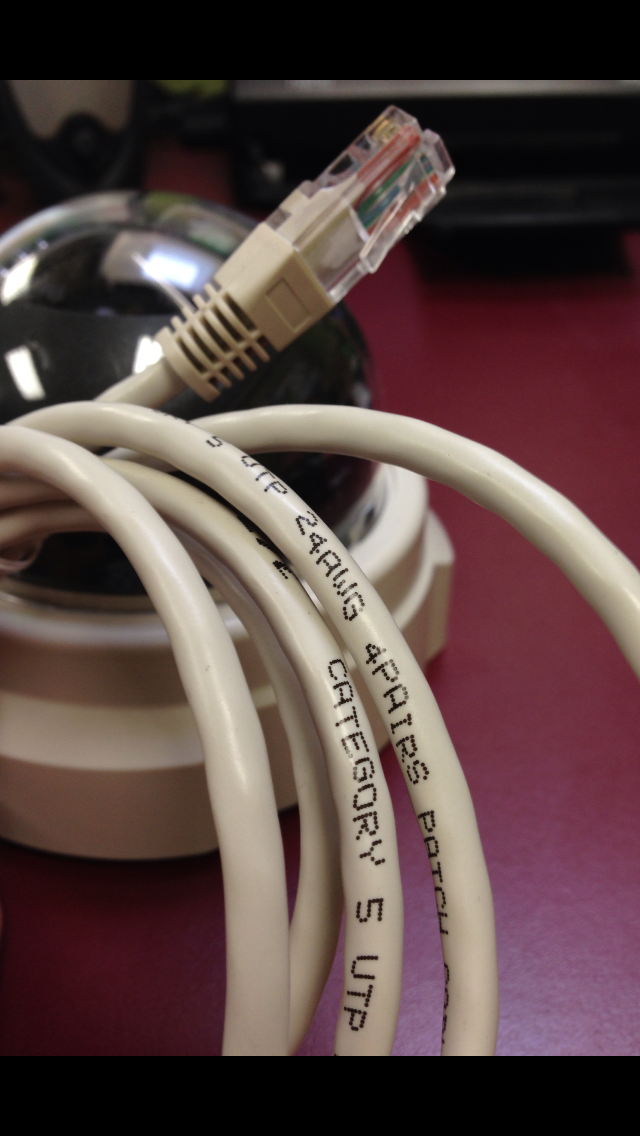CCTV started out as a strictly wired system. The cameras were connected to a monitor station by expensive coaxial cable. However that system was solid. Even today coaxial cable is still being laid because, the truth is, it’s reliable at 1-10 Gbps. Reliable, but outdated. It was made for the technology at the time, and with that comes it limitations such as QoS, installation costs, scalability issues, and the list goes on.

As the technology improved and networks began to carry more data, people moved on to Twisted Pair Cable. Not that twisted pair was a new concept, it was invented by Alexander Graham Bell, but the application fits today’s needs. Today there are different categories, primarily Cat(egory)3 through Cat7. Cat3 (10BASE-T) technically can do the trick with 10-Mbps (for instance, you can stream Netflix over 2 Mbps, so Cat3 is great), but I wouldn’t recommend it. I would say nothing shy of Cat5 (100BASE-TX) or maybe even Cat5e (1000BASE-T) at this point in time.

There are 2 main kinds of Twisted Pair Cable:
Unshielded Twisted Pair (UTP): This is the more common of the 2, as it’s used primarily in Ethernet connections such as computer networks and security systems. Consider a cable connecting your network. Within that cable are 4 pairs of thin copper wire, twisted together. Each individual copper wire is coated in (usually) a polyurethane coat which acts as an insulator.

Shielded Twisted Pair (STP): Like UTP, STP has the same structure, only in this case, each pair is wrapped in foil. Each pair is ‘shielded.’ This prevents cross-talk and cuts back on electromagnetic interference. STP is more suitable for telephone connections.
Other Twisted Pair cables are screened unshielded twisted pair cable (S-UTP), unshielded/foiled twisted pair cable (U/FTP), screened/foiled twisted pair cable (S/FTP).
The next best thing is Fiber Optic. Where Twisted Pair cable currently caps out at Cat7 (10GBASE-T) which is streaming 10 Gigabits instead of mere Megabits, Fiber Optic has successfully streamed in the Terabits. Fiber Optic Cable is literally optical fiber that sends electrical signals at these wildly fast speeds by ways of optical transmitters using LEDs and receivers that convert the light into information. Please note that an incredibly complicated process has just been summed up in 1 sentence, so keep in mind there is a lot of technology behind this and that technology is very expensive. Ergo, Fiber Optic is still relatively scarce, and evaluating if you genuinely need it or not would be a smart investment of time.
Now you know the types of wires making up a Network! From this you should be able to make an assessment of your needs, and of course if you need any help please call 866.885.4853 and we’re here to help you!
